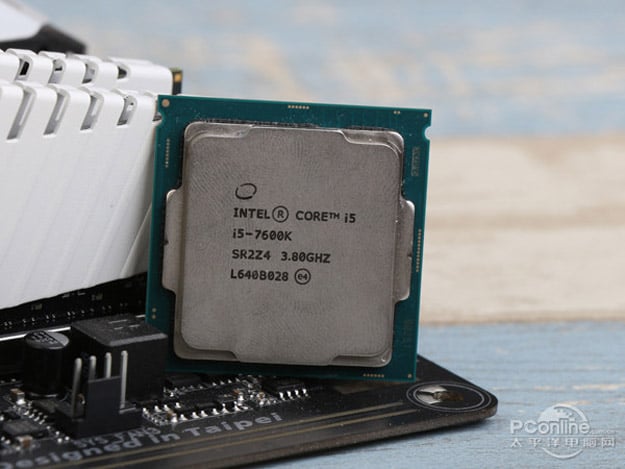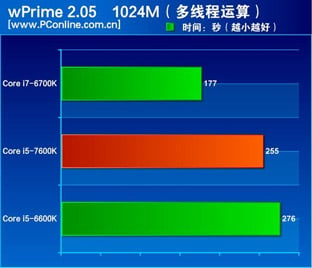Intel Kaby Lake Core i5-7600K Desktop CPU Specs And Benchmarks Leaked

In this case, the publication got its hands on the Core i5-7600K, which is reportedly the top-end SKU in the Kaby Lake Core i5 family (though we all want to see what Core i7 Kaby Lake will do). Still based on 14nm FinFET technology (or rather, 14nm Plus), the quad-core Core i5-7600K has a base frequency of 3.8GHz and can Turbo Boost to 4.2GHz. It has 6MB of L3 cache and has a rated TDP of 91W.
For comparison, the Skylake-based Core i5-6600K, which the Core i5-7600K will be replacing, has a base frequency of 3.5GHz and can Turbo Boost to 3.9GHz. Like its successor, it too has 6MB of L3 cache and a TDP of 91W.
On the graphics front, the new Kaby Lake processor has an integrated Intel HD 630 graphics core, which will be clocked slightly higher than the HD 530 core found in its Skylake counterpart. We can expect to see some slight performance gains in graphics performance, but we all know that you folks will be pairing these processors up with smokin’ NVIDIA Pascal or AMD Polaris dedicated GPUs.
To see how the Core i5-7600K stacks up against the Core i5-6600K in performance, a test system was setup that includes a Gigabyte Z170X-UD3 Ultra motherboard with 16GB of DDR4-2133 memory, 480GB A-Data SP550 SSD, Gigabyte GeForce GTX 1080 Xtreme Gaming graphics card, HighPower 1000W power supply and Windows 10 64-bit.
While operating within the same power envelope as the Core i5-6600K, the Core i5-7600K offered roughly a 7 percent to 10 percent performance advantage over its predecessor, which can mainly be attributed to the increase in clock speeds. Is that enough to get those running Skylake to take the plunge with Kaby Lake? Perhaps, if the power efficiencies and some of the enhancement to Intel Speed Shift are taken into consideration. Regardless, at least you have an idea about what you’d be missing out on with Intel’s Kaby Lake refresh that will start sweeping the PC industry at the start of the year.






